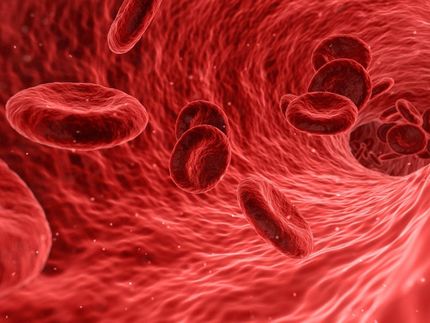Freeze-frames of enzymes in action have implications for a new cancer treatment concept
Over millions of years of evolution, cells have developed myriad ways of regulating the processes that enable them to thrive. Especially useful tools have been saved, or "conserved," over the eons, so that today we can find them in a broad spectrum of life forms, from the very primitive to the most complex.
Research conducted by structural biologists at Cold Spring Harbor Laboratory (CSHL) sheds light on how one such conserved mechanism works, with implications for the development of new cancer drugs.
Led by CSHL Professor and Howard Hughes Medical Institute Investigator Leemor Joshua-Tor, the team used x-ray crystallography to capture the equivalent of freeze-frames of a class of enzymes called TUTases. The pictures, at the resolution of individual atoms, shows them interacting with other molecules to regulate the activity of an important small RNA molecule called let-7.
Let-7, a microRNA, is a regulator of genes important in development. When expressed in humans, it's part of the process in which our stem cells differentiate into the various specialized cell types that populate our organs. In contexts in which it's important for stem cells to maintain their "stem-ness" - their ability to give rise indefinitely to more stem cells - let-7 needs to be deactivated.
Let-7 is of special interest because its deactivation in cancer cells is thought by some to confer upon those cells the stem cell-like property of being able to proliferate indefinitely. This has focused attention on understanding the mechanisms regulating whether let-7 is active or inactive.
The team's pictures show how TUT4 and TUT7 - two of the TUTase enzymes - act differently in the two contexts. In a differentiating cell, the TUTases correct a small genetically induced defect in the sequence of many let-7 precursors, enabling mature let-7 microRNAs to be generated. Those defects are ameliorated when a TUTase adds a single uridine ("u") molecule to the sequence of a let-7 precursor.
In a stem cell destined to retain its stem-ness, one of the TUTases adds not one but 30 uridines to the let-7 precursor, in this way marking it for destruction by another enzyme. "We have been able to capture the TUTases in these two different modes of action," says Joshua-Tor.
Joshua-Tor explains that TUTases are promising targets for new cancer therapies. In kidney and lung cancer cells, for example, in which let-7 levels are far below normal, TUTases involved in marking let-7 for destruction could perhaps be inhibited. Having extremely high resolution images of how they act in the molecular dance should help in that effort.
Original publication
Other news from the department science

Get the life science industry in your inbox
By submitting this form you agree that LUMITOS AG will send you the newsletter(s) selected above by email. Your data will not be passed on to third parties. Your data will be stored and processed in accordance with our data protection regulations. LUMITOS may contact you by email for the purpose of advertising or market and opinion surveys. You can revoke your consent at any time without giving reasons to LUMITOS AG, Ernst-Augustin-Str. 2, 12489 Berlin, Germany or by e-mail at revoke@lumitos.com with effect for the future. In addition, each email contains a link to unsubscribe from the corresponding newsletter.






















































